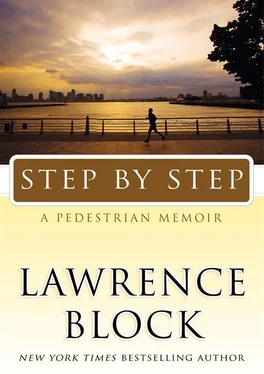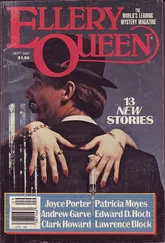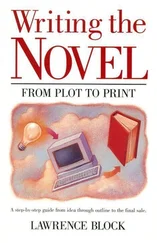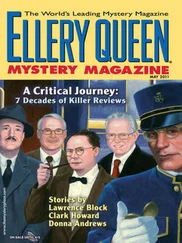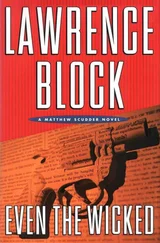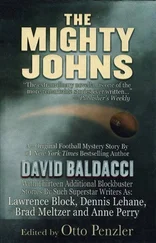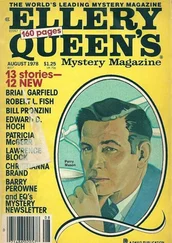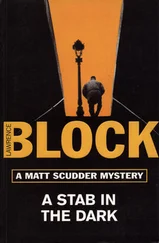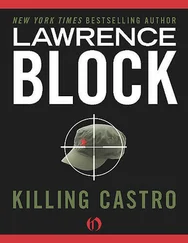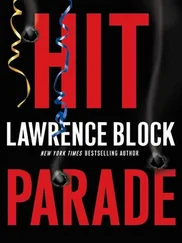Lawrence Block - Step by Step
Здесь есть возможность читать онлайн «Lawrence Block - Step by Step» весь текст электронной книги совершенно бесплатно (целиком полную версию без сокращений). В некоторых случаях можно слушать аудио, скачать через торрент в формате fb2 и присутствует краткое содержание. Год выпуска: 2009, ISBN: 2009, Издательство: William Morrow, Жанр: Биографии и Мемуары, Юмористические книги, на английском языке. Описание произведения, (предисловие) а так же отзывы посетителей доступны на портале библиотеки ЛибКат.
- Название:Step by Step
- Автор:
- Издательство:William Morrow
- Жанр:
- Год:2009
- ISBN:978-0-06-172181-6
- Рейтинг книги:3 / 5. Голосов: 1
-
Избранное:Добавить в избранное
- Отзывы:
-
Ваша оценка:
- 60
- 1
- 2
- 3
- 4
- 5
Step by Step: краткое содержание, описание и аннотация
Предлагаем к чтению аннотацию, описание, краткое содержание или предисловие (зависит от того, что написал сам автор книги «Step by Step»). Если вы не нашли необходимую информацию о книге — напишите в комментариях, мы постараемся отыскать её.
bestselling author comes a touching, insightful, and humorous memoir of an unlikely racewalker and world traveler.
Step by Step — читать онлайн бесплатно полную книгу (весь текст) целиком
Ниже представлен текст книги, разбитый по страницам. Система сохранения места последней прочитанной страницы, позволяет с удобством читать онлайн бесплатно книгу «Step by Step», без необходимости каждый раз заново искать на чём Вы остановились. Поставьте закладку, и сможете в любой момент перейти на страницу, на которой закончили чтение.
Интервал:
Закладка:
And it turned out he was right.
The trip itself was mostly good, though much of the day-to-day activity with the penguins was tedious. There were several chores we shared, one of which involved dividing up into twos and threes and going from nest to nest, duly noting whether a particular nest had a chick present, and, if so, estimating the maturity of the chick. (“Well, she was cute, but I don’t think she was old enough to drink.”) Some nests had been abandoned, and we’d note that, too. All of the nests reeked to the heavens, but we didn’t have to write that down.
We also did roadside surveys, during which we would spend an hour standing at the side of the road, counting penguins. The birds would walk to the ocean in the morning, and every afternoon they returned to the land and crossed the road to their stinking nests. We’d wait for them and make pencil marks in our notebooks. We’d watch two penguins cross the road, and make two marks. Then a single penguin. Then four would cross, but then one would go back. Then another penguin would cross the road, and then—
Back at our shared lodgings, Sara would enter all this data into the computer. She was a whiz at data entry, which earned her big props from the other volunteers, all of whom were at least a couple of years older than her, while being upward of a generation younger than I. I took great pleasure in being Sara’s grandfather, but there in Penguin Heaven I felt like everybody’s grandfather, and that wasn’t all that much fun.
The program one day called for picking up a penguin from its nest, holding it upside down by its feet, and causing it to vomit. (I forget how this end was achieved. If it had been up to me, I’d have made them watch Eight Million Ways to Die in Spanish.) Then the regurgitated stomach contents were sent off somewhere to be analyzed.
But it wasn’t all penguin puke. We spent a busy afternoon walking the beaches and filling trashbags, and another riding around taking a survey of local wildlife. The best part of the experience, as far as I was concerned, was the chance to spend some time with Sara, and we managed to fit in a couple of days on our own in Cape Town after we were done herding penguins.
Then we flew home, and I went to the gym.
I was already a member, but now I was determined to use the place in a disciplined fashion. I decided I’d go every day, and I determined that my first order of business would be a half hour on the treadmill. After that I’d do some weight work three or four times a week, but the treadmill was going to be the core of my program. I wanted to burn some calories, and I only hoped my feet wouldn’t stop me.
Early that July, a freak accident with a rubber sandal tore the pad of the big toe on my right foot, and I’d had to limp over to St. Vincent’s to get it stitched up. It had healed perfectly, but that foot continued to give me grief. It was often numb and tingling in the mornings, and I had a long-standing touch of arthritis in that same toe that I’d torn open. I could live with all that, it was part of being an old man, but I was concerned that it might interfere with my treadmill regimen.
To my surprise, the walking seemed to help the foot. I don’t know why this should have been the case, it’s not as though I hadn’t been walking a fair amount before I got anywhere near the treadmill, but I wasn’t going to argue with this particular success. I kept on keeping on, and I hit the gym every morning, seven days a week.
I’d been doing this for about a month when I got my first actual job in almost forty years. Two friends of mine, Brian Koppelman and David Levien, hired me as a staff writer and assistant story editor for a dramatic show about the world of big-time poker that they were developing for ESPN. All of a sudden I had an office in Midtown to go to five days a week, and regular hours to keep.
That would have been a perfect excuse to give up the gym, or at least reduce my visits, but I was getting too much gratification from the routine I’d established, and all I had to do was hit the gym before I went to the office. The gym opened at five, so how hard was it to fit in an hour or so before I showered and dressed and caught the E train uptown? Not hard at all, as it turned out, and working on Tilt! never made me miss a single session at the gym.
At first I put in a daily half hour of racewalking on the treadmill, capped by a five-minute cooldown. After a few weeks I started extending occasional sessions to an hour, with a ten-minute cooldown.
Treadmills allow you to choose your pace, and I started out at fifteen-minute miles, kicking it up a notch every five or ten minutes. I worked out a formula for increasing the overall speed of my workout by almost imperceptible increments, and within a couple of months I’d be finishing each daily session around the twelve-minute-mile mark. I kept a water bottle handy and drank water at regular intervals, and it was a good thing, because these sessions were sweaty work. I was always dripping by the time I was done.
I would see other people reading a book or newspaper while they used the treadmill, and I couldn’t figure out how they managed it. It seemed to me that if you were able to read at the same time, you weren’t working hard enough. And I was working as hard as I could.
And it was paying off. I was seeing results — on the scale and in the way my clothes fit. My fat pants returned to the basement storage bin, where they are even now biding their time until I need them. I was in good shape and I felt terrific, and, if I still had arthritis in my toe and some neuropathy on some mornings, on balance my foot was a good deal better.
Of course I couldn’t leave well enough alone.
It was on the last day of the year when everything changed dramatically. Lynne and I took the easy way out for New Year’s Eve, spending the evening at home after an early dinner in the neighborhood. Later we’d turn on the TV and watch the ball come down, but first we found ways to amuse ourselves, and I sat down at the computer and Googled my way into trouble.
A couple of days earlier, I’d finished a long session on the treadmill, an hour plus a ten-minute cooldown, and one of the machine’s dials helpfully pointed out that I’d gone 4.8 miles, or 5.2 miles, or whatever the hell it happened to be. I think it must have been just over five miles, because the thought that came to me was that I’d just gone the equivalent of a five-mile race.
Race . A dangerous word, that.
Well, was there any reason I couldn’t enter a race? I wouldn’t be very fast, but then I’d never been fast, so what difference did it make? I dismissed the idea, but I guess it must have decided to hang around, because what I Googled on New Year’s Eve was NEW YORK ROAD RUNNERS.
That was the club I’d belonged to in my racing days. I hadn’t renewed my membership when it expired back in 1982, and I’d certainly had no contact with the organization, but I knew it was still going strong. Fred Lebow, the inspired monomaniac who’d essentially created the modern urban marathon singlehanded, had lost a long battle to brain cancer some years ago, but the organization he’d spearheaded now owned the East Eighty-ninth Street brownstone where it was headquartered, and still ran the New York City Marathon over the same course I’d covered almost twenty-five years earlier. It stood to reason they’d have a website, and indeed they did, and twenty minutes later I was a member and had signed up for two races.
Now that’s the trouble with the damned Internet. It makes everyone an impulse shopper. Just a few years ago, if I read about a book that sounded interesting, I had to remember to look for it the next time I was in a bookstore, and by then I may have already determined that I could live without it. Or they might be out of stock, or I might sport-read a few pages and decide the hell with it.
Читать дальшеИнтервал:
Закладка:
Похожие книги на «Step by Step»
Представляем Вашему вниманию похожие книги на «Step by Step» списком для выбора. Мы отобрали схожую по названию и смыслу литературу в надежде предоставить читателям больше вариантов отыскать новые, интересные, ещё непрочитанные произведения.
Обсуждение, отзывы о книге «Step by Step» и просто собственные мнения читателей. Оставьте ваши комментарии, напишите, что Вы думаете о произведении, его смысле или главных героях. Укажите что конкретно понравилось, а что нет, и почему Вы так считаете.
